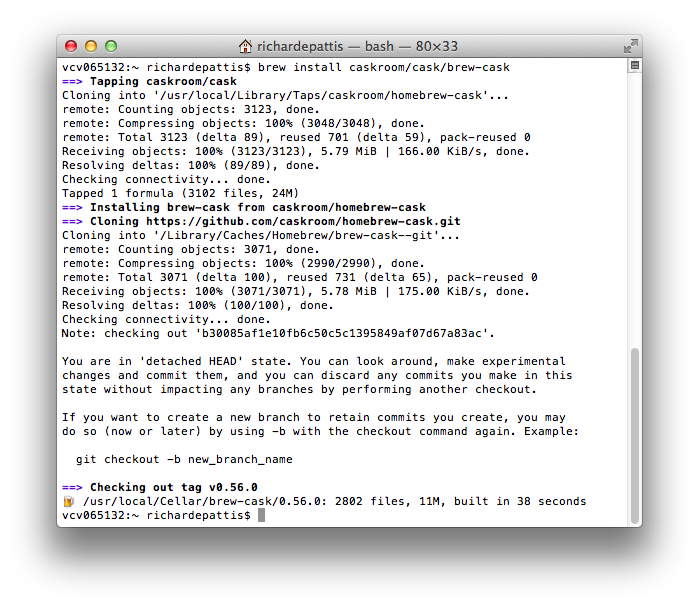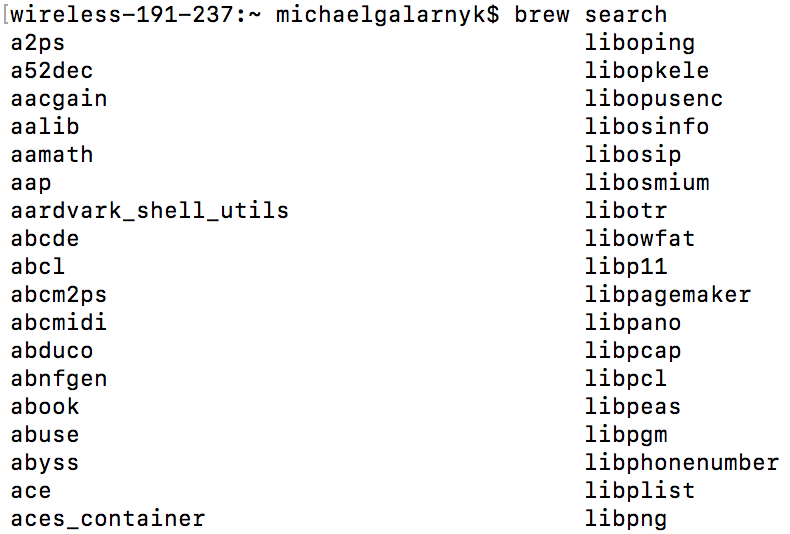

Which will usually return: ~/Library/Caches/Homebrew Remove a formula entirely (only do this if you know what you’re doing) To first see what would be cleaned up, without actually doing the cleaning: The following commands for for cleaning that stuff up. So when formulae are updated, Homebrew leaves the old stuff sitting around. Stop something from being updated/upgradedīrew unpin Uninstall old versions of a formulaīy default, Homebrew does not uninstall old versions of a formula.
BREW CASK LIST INSTALLED INSTALL
To install an app use the following command (this will automatically download, extract the app, and install it to your Applications folder)īrew cask uninstall Update your local packagesįirst, update the formulae and Homebrew itselfīrew upgrade Stop a formula from being updated Remove that package from your system later You can browse the available Formulae here. Packages on Homebrew are known as Formulae. Add on the option -enable-notification to send a notification when the autoupdate process has finished successfully. You can also add on some other options, such as -upgrade or -cleanup to automatically run brew upgrade and/or brew cleanup respectively. So for 12 hours, you’d set it to an interval of 43200 brew autoupdate start 43200 If you want to set it to a different interval, you’d use the following command. This will have it check for updated repository data every 24 hours. To set that up, run this command: brew autoupdate start If you want, you can have Homebrew update the repository data automatically. Homebrew/homebrew-cask (git revision f350ee0a28 last commit ) Keeping Homebrew updatedīefore installing packages with Homebrew it’s a good idea to update its application repository data (basically its list of known applications), if you’ve not done so for some days or longer. Homebrew/homebrew-core (git revision 7bd3aacf5d last commit ) Type in brew -version and something like the following should show up:

Just in case you’re new to this, please go over the following instructions.
BREW CASK LIST INSTALLED HOW TO
If you’re on of those people, you probably already have it installed, and know how to use it.
BREW CASK LIST INSTALLED MAC
If, however, you like to make you Mac perform other tasks that the GUI doesn’t support, such as programming related tasks, then Homebrew is likely to be very handy. If you’re not someone that likes to tinker under the hood of your operating system, and use your computer for anything more than the common tasks performed through the graphical user interface (GUI), then Homebrew is likely not of much use to you. Why use Homebrew?įor many Apple computer users, there’s no reason at all to use Homebrew. But first, let’s look at why you’d even bother. Without getting into all the details, in this Mac Tip I will share basic instructions on how to install and use Homebrew.

On Debian based Linux systems (such as Debian, Ubuntu, and others) there’s a tool called Advanced Package Tool, or APT for short, and it comes with the OS. Although on your Mac Homebrew is only used for command / system level tools and applications. Package managers are fundamental to Linux systems (which OS X / macOS is based on), for installing pretty much anything you may need at the command line level and also front-end applications. Homebrew is the Mac equivalent of an application package manager. What is Homebrew (for Mac OS, not the homebrew you drink)


 0 kommentar(er)
0 kommentar(er)
